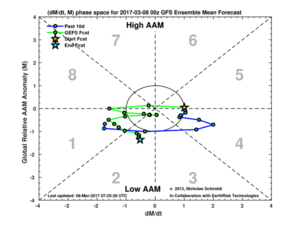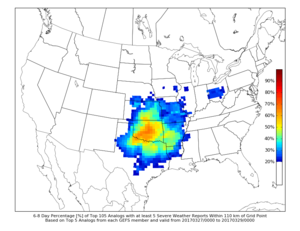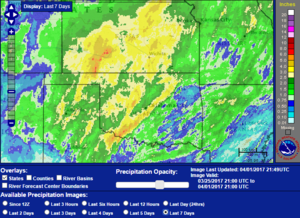chrisbray
EF4
Looks like winter decided to show up now that it's March.
I would anticipate the CPC charts to reflect more of what we expectTaking a look ahead - not looking great for a widespread organized severe event for at least the next 7-10 days. I had to go well out into fantasy land in the ensembles (GEFS, Canadian, ECMWF) to find big troughs or shortwaves coming across the Plains. The pattern coming up looks to favor cooler and drier weather with northwest flow across the central US and and eastern US trough. However, CPC temperature outlooks suggest above average temperatures will be maintained across much of the US, so go figure there. Either way, it appears a return to more "normal" early-mid March weather is on the way and severe weather will be pretty much absent over the next 7-10+ days.
We're only just getting started.

I would anticipate the CPC charts to reflect more of what we expectupdates today.
As Jeff mentioned organized severe seems really unlikely in the next 14 days or so. However, GEFS AAM forecasts indicate a return to a more favorable phase space for organized severe weather after day 14 or so. Would keep an eye out on late a March and early April as a result. View attachment 15323
However, GEFS AAM forecasts indicate a return to a more favorable phase space for organized severe weather after day 14 or so. Would keep an eye out on late a March and early April as a result. View attachment 15323


